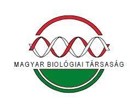Rózsacserjék (Rosa spp.) térbeli mintázatának hatása a Diplolepis rosae általi parazitáltságra
Absztrakt
Az aggregáltság a paraziták eloszlásának biológiai szempontból lényeges tulajdonsága, mivel a parazita egyedek eloszlása szoros összefüggésben áll a gazda populáció térbeli mintázatával, amely kapcsolat a majdani gazda-parazita viszonyt alakíthatja. A gazdaegyedek térbeli mintázatának és egyedszámának a parazitáltságra gyakorolt hatását tanulmányoztuk rózsacserjéken (Rosa spp.) élősködő rózsagubacsdarázs (Diplolepis rosae Linnaeus, 1758) esetében. Vizsgálatunkat két éven keresztül végeztük nyolc legeltetett száraz gyepen. Eredményeink azt mutatják, hogy a rózsacserjék nagy egyedszámnál egyenletes térbeli mintázatot mutatnak, viszont kis egyedszámnál foltokban jelennek meg. A cserjék aggregáltsága pozitívan hat a gubacsok számára és negatívan a gubacsok aggregáltságára. A cserjék aggregáltsága és parazitáltsága pozitív összefüggést mutat. A D. rosae általi parazitáltság alacsonyabb a rózsacserjék egyenletes térbeli mintázata esetén.
Hivatkozások
Abrahamson, W. G. & Weis, A. E. (1997): Evolutionary ecology across three trophic levels: goldenrods, gallmakers and natural enemies. - Princeton University Press, Princeton, New Jersey, USA. 456 pp.
Altizer, S., Harvell, D. & Friedle, E. (2003): Rapid evolutionary dynamics and disease threats to biodiversity. - Trends Ecol. Evol., 18: 589-596.
Baddeley, A. & Turner, R. (2005): Spatstat: an R package for analyzing spatial point patterns. - J. Star. Soft., 12: 1-42.
Cressie, N. (1993): Statistics for Spatial Data. - John Wiley & Sons Inc., New York, 900 pp.
Cronin, J. T. & Strong, D. R. (1999): Dispersal-dependent oviposition and population dynamics of a host and párásítóid. - Am. Nat., 154: 23-36.
Hails, R. S. & Crawley, M. J. (1992): Spatial density dependence in populations of a cynipid gall-former Andricus quercuscalicis. - J. Anim. Ecol., 61: 567-583.
Heads, P. A. & Lawton, J. H. (1983): Studies on the natural enemy complex of the holly leafminer: the effects of scale on the detection of aggregative processes and the implications for biological control. - Oikos, 40: 267-276.
Lloyd, M. (1967): Mean crowding. — J. Anim. Ecol., 36: 1-30.
Memmott, J., Martinez, N. D. & Cohen, J. E. (2000): Predators, parasitoids and pathogens: species richness, trophic generality and body sizes in a natural food web. - J. Anim. Ecol., 69: 1-15.
Poulin, R. (1993): The disparity between observed and uniform distributions: a new look at parasite aggregation. - Int. J. Párásítói, 23: 937-944.
R Development Core Team (2005): R: A Language and Environment fo r Statistical Computing. - R Foundation for Statistical Computing, Vienna, Austria. (URL http://www. R-project.org).
Ray, C. & Hastings, A. (1996): Density dependence: are we searching at the wrong spatial scale? - J. Anim. Ecol, 65: 556-566.
Rékási, J., Rózsa, L. & Kiss J. B. (1997): Patterns in the distribution of avian lice (Phthiraptera: Amblycera, Ischnocera). - J. Avian Biol., 28: 150-156.
Rózsa, L., Reiczigel, J. & Majoros, G. (2000): Quantifying parasites in samples of hosts. - J. Párásítói, 86: 228-232.
Rózsa, L., Rékási, J. & Reiczigel, J. (1996): Relationship of host coloniality to the population ecology of avian lice (Insecta: Phthiraptera). - J. Anim. Ecol., 65: 242-248.
Sandin, S. A. & Pacala, S. W. (2005): Fish aggregation results in inversely density-dependent predation on continuous coral reefs. - Ecology, 86: 1520-1530.
Schönrogge, K., Stone, G. N. & Crawley, M. J. (1995): Spatial and temporal variation in guild structure - parasitoids and inquilines of Andricus quercuscalicis (Hymenoptera, Cynipidae) in its native and alien ranges. - Oikos, 72: 51-60.
Stiling, P. D. & Strong, D. R. (1982): Egg density and the intensity of parasitism in Prokelisia marginata (Homoptera, Delphacidae). - Ecology, 63: 1630-1635.
Walde, S. J. & Murdoch, W. W. (1988): Spatial density dependence in parasitoids. - Annii. Rev. Entomol., 33: 441-466.
Williams, D. W. & Liebhold , A. M. (2000): Spatial scale and the detection of density dependence in spruce budworm outbreaks in eastern North America. - Oecologia, 124: 544-552.






